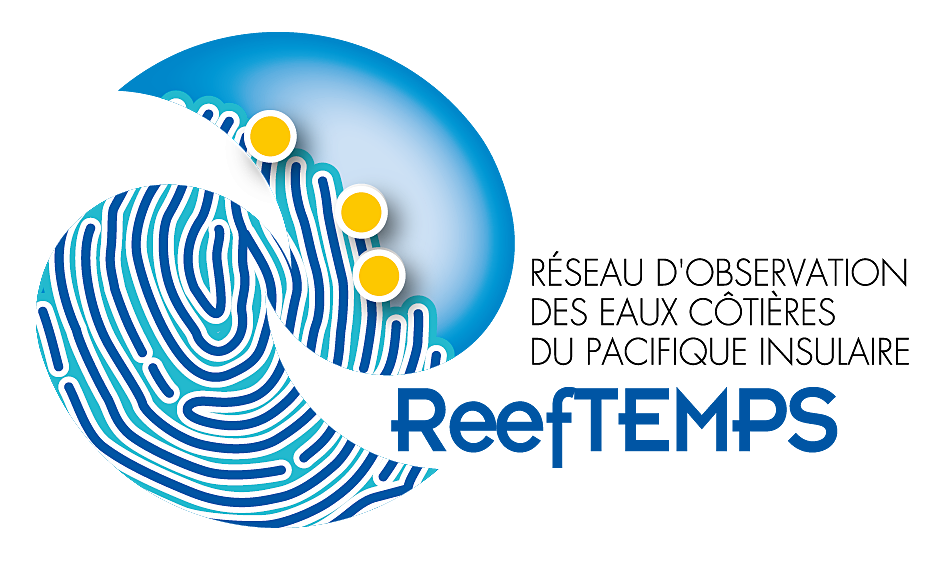The Pacific Insular Coastal Water Monitoring Network is a network of temperature, pressure and salinity sensors in the tropical coastal zone, mainly in the South Pacific, for long-term monitoring of climate change and its effects on the state of coral reefs and their resources. ReefTEMPS was created in 2010 and has been awarded the Service National d’Observation (SNO) label by the Commission Spécialisée Océan-Atmosphère (CSOA).
Five structures contribute to its maintenance, depending on the zone:
- IRD – ENTROPIE (New Caledonia, Wallis and Futuna and Vanuatu),
- University of the South Pacific – USP (Fiji Islands),
- Pacific Community / Fisheries Department – SPC (other small oceanic countries: Cook Islands, Federated States of Micronesia, Marshall Islands, Kiribati, Nauru, Palau, Papua New Guinea, Pitcairn, Samoa, Solomon Islands, Tokelau, Tonga, Tuvalu, Yap),
- Direction de Ressources Marines – DRM – in French Polynesia,
- Université de La Réunion – Reunion Island.
The instrument parks and data pre-processing are provided by the following technical teams:
- IRD’s IMAGO Research Support Unit for the Pacific,
- OSU-R for the Indian Ocean.
UMR MARBEC provides support for network coordination, in particular for representation within IR ILICO and with IR Data Terra’s ODATIS data cluster, as well as for information system management, long-term archiving and data dissemination services.
ReefTEMPS is therefore a largely shared SNO. The ReefTEMPS network integrates pre-existing observation stations, some of them dating back to 1958. It has therefore acquired numerous decadal or multi-decadal data series, some of which exceed 60 years. Over the past 60 years, 450 sensors have recorded several hundred million measurements.
The data is freely accessible via various web services www.reeftemps.science/en/data/. They are also archived at the Seanoe/Odatis/IR Data Terra service – (Varillon et al. doi:10.17882/55128) and (Liao et al. doi:10.17882/82291).
Historically based in the Pacific Ocean, the network has expanded geographically towards the Indian Ocean, in 2021, with the implementation of a station on Reunion Island as part of an inter-SNO instrumented transverse site approach supported by IR ILICO (Cordier et al. doi:10.26171/7pcx-vm26 ).
The network is also committed to introducing thematic and technological innovations, with
- the installation of connected buoys equipped with accelerometers to measure swell in real time;
- the deployment of a pH sensor;
- real-time parameter monitoring using IoT (Internet of Things) technologies (Fiat et al. 2022) – visible on the real-time page: https://www.reeftemps.science/en/live;
- automation of coral bleaching risk alerts by e-mail.
These new network developments and deployments are justified by the scope of the research programs developed by the Pacific and Indian teams, and correspond to a commitment to more operational objectives focusing on the vulnerability of coastlines to extreme events such as heat waves and their impact on ecosystems, as well as the monitoring and understanding of extreme surges. These objectives are closely linked to the concerns of public authorities in terms of coastal risk prevention.

